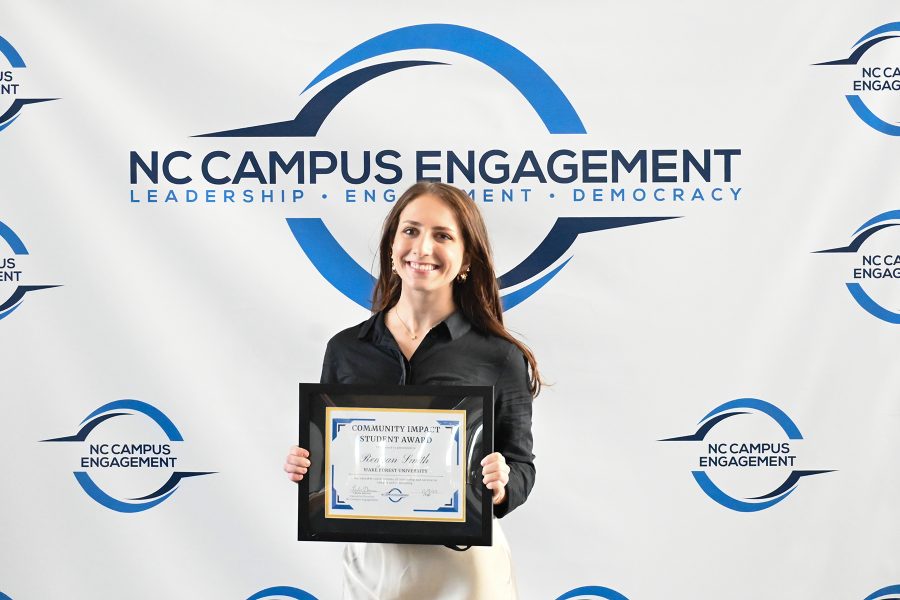Jason Fanning has spent a lot of time talking to older adults about leading healthy, active lifestyles. And he knows that the minute he utters the word “exercise,” he loses many of them.
Instead, he talks to them about movement across the day, a key component of his current research study, A Mobile Health Intervention to Reduce Pain and Improve Health (MORPH) in Older Adults With Obesity. With $5.7 million in funding from the National Institutes of Health, Fanning will spend the next five years trying to show study participants the connection between how much they move throughout the day and the pain they feel from osteoarthritis.
Fanning, associate professor of Health & Exercise Science at Wake Forest University, explains his research, what he means by movement and how he feels about fitness trends like Zone Zero.
As a researcher focused on “movement medicine,” what is the core problem with the word “exercise?”
From a health promotion perspective, I have a few issues with focusing solely on “exercise” because we’ve been trying to promote it for about a hundred years and haven’t seen a lot of progress. If you say “cardio” or “workout,” these are people in tight clothing, lifting heavy weights in a specific gym context. Many people find those things intimidating, and these are behaviors they just don’t happen to enjoy.
A lot of us think about exercise in a way that I would call discrete: I’m going to go exercise today and then I’m done with it. We pat ourselves on the back and we say, “I did a great job and now I’m going to go eat the big slice of cake and I’m going to go relax on the couch because I’ve earned it.”
We have compared people doing treadmill-based exercise versus something like moving across the day, and what we see is that, on average, people who exercise actually drop the non-exercise behaviors they do across the day—they actually sit more. If instead we encourage people to move often, that compensation doesn’t happen. If the structured exercise routine stops, people who were focusing only on exercise are often in a worse state than before they started, as their sitting time increases and their overall movement profile decreases.
We should instead center our conversation on “movement,” which connotes ideas of dance, playing with grandkids and moving in the community.
You discuss a concept you call the “active couch potato.” What does this mean, and why is it a problem?
We get a lot of benefit by increasing how much we move. But there’s also this idea of an active couch potato—I’m going to go for a run in the morning, and the rest of my day I’ll be sitting in the car and sitting at my desk and sitting at the dinner table and sitting while I watch television. If you have chronic pain, sitting all day can make you feel stiff and make your pain feel much worse, greatly impacting your quality of life. Sitting around all day can also make you snack more, which is tough if you are trying to eat healthy. One of the most potent influences on our blood sugar regulation is our muscular contraction. If we are sitting all day long and unloading our muscles, we won’t have good blood sugar regulation.
In my research, a lot of what we are interested in is helping people to not only move more, but to think about how often they move across the day to disrupt how much they’re sitting. And then a little secret benefit of this is that if people have to move all day long, they inherently become a little bit more creative in the way that they move their bodies, which makes them a little bit more immune to saying I don’t feel like doing this today or changes in weather or season or events in my life that might disrupt my exercise routine.
Can you describe your research on older adults with chronic pain, the MORPH studies?
We are doing this series of studies called MORPH, and we have one that’s ramping up right now. We hope to reach a whole bunch of older adults remotely. They never have to come in to see us; we ship everything to them. We ask them to dial into a video conference call with us once per week for about six months. It’s a group-based counseling program where they learn all about physical activity and healthy eating and how these things interrelate with their pain symptoms. They do this with peers, so they can develop some social connection.
Between these meetings, they use apps that we develop and they wear sensors that we integrate with those apps to learn about the relationship between their pain and how they pattern their activity. They’re taught to think, OK, I’m seeing these big gaps. Was I feeling more pain? What happens if I can add a little bit more activity into that period? Does that help alleviate my pain? And then we come back a year later to see how many of these things stuck around, because we’re teaching people to integrate activity in their lives to build a healthy, active lifestyle.
Part of what you’re studying sounds a lot like the new Zone Zero fitness trend. What’s your general advice about fitness trends, and what do you think about Zone Zero?
I always ask our students and research participants to come to us with the fads they’re hearing out in the world. I like to remind them that if it’s surprising, I probably wouldn’t hang my hat on it. We’ve known for centuries the way to move our bodies: We need to move them more, and we need to move them, generally, more often.
Something like Zone Zero is good in some ways because it encourages people to think more about that lower end of the intensity continuum: How am I spending most of my day, and how can I move in ways that feel good and are restorative? But like a lot of trends, it feels a little bit like a quick fix, and it does ignore the fact that we need to be spending a little bit of time every day at that intensity level where we can feel our heart rate increasing a little bit. We need to move across that full intensity continuum.
For someone struggling to become physically active, what is the most important advice you have for them?
The broader psychological literature says that the strongest predictor of a person sticking around in a behavior for a long time is if they find that behavior intrinsically motivating. People may operate on things like competition, or a desire to look a certain way, or not wanting to feel guilty. These things can motivate us in the fairly short term, but in the long term, you end up falling off. If you can keep a focus on, “Am I enjoying it or do I find it satisfying,” you’re going to continue to come back to that behavior in the long term.
I research movement medicine. We should think about physical activity promotion much like any other medicine. When dispensing medicine, we need to know the active ingredient, how to match it to the person’s specific needs, what the packaging is (to ensure they stick with the behavior), and how to ensure everyone who needs it has access.
In the context of physical activity, this means determining the parameters of movement that will meet the needs of a very specific person. As a psychologist, my focus is on how to “package” that behavior so the person picks it up and then sticks with it for the rest of their life. We need to help people break out of their preconceived notions about what movement and exercise look like and be creative and curious about building an active lifestyle.
More about MORPH
A Mobile Health Intervention to Reduce Pain and Improve Health (MORPH) in Older Adults With Obesity is recruiting participants age 65 and older who have osteoarthritis. Participation is free and study visits are online. For information, email MORPH@wfu.edu, call (336) 758-6677 or visit the MORPH recruitment website.



